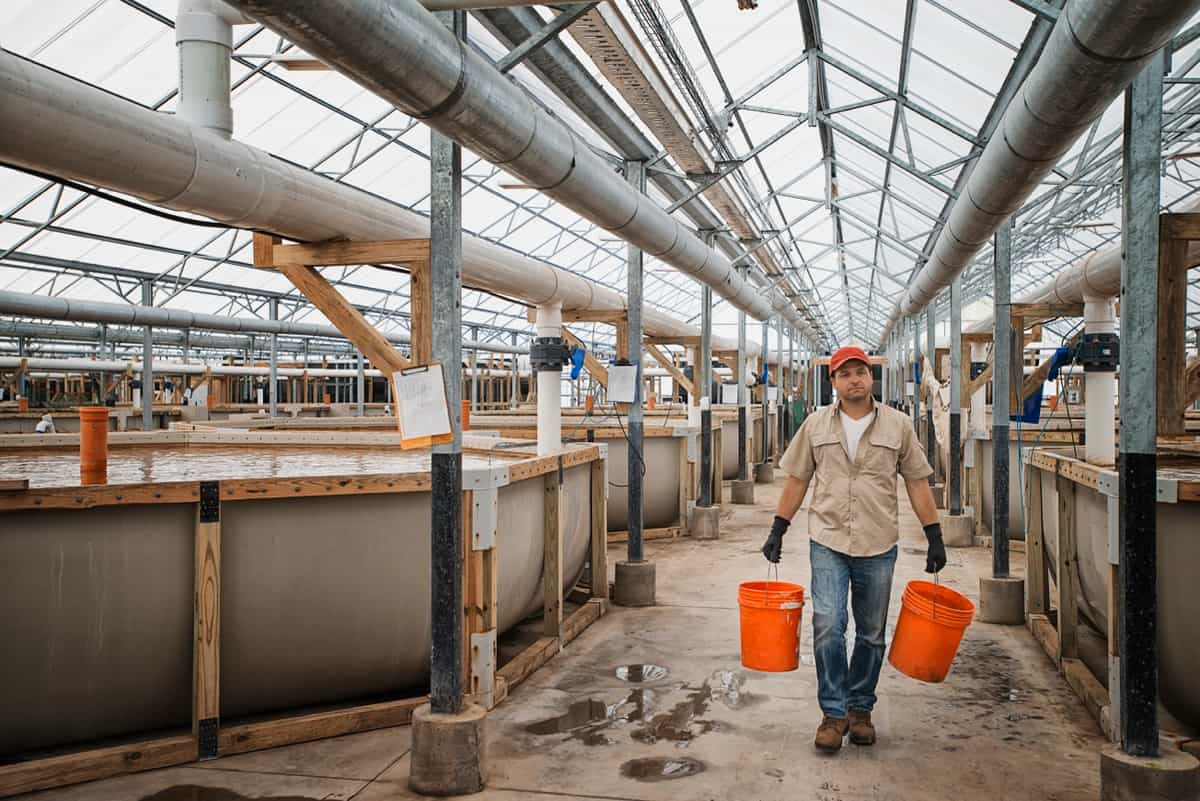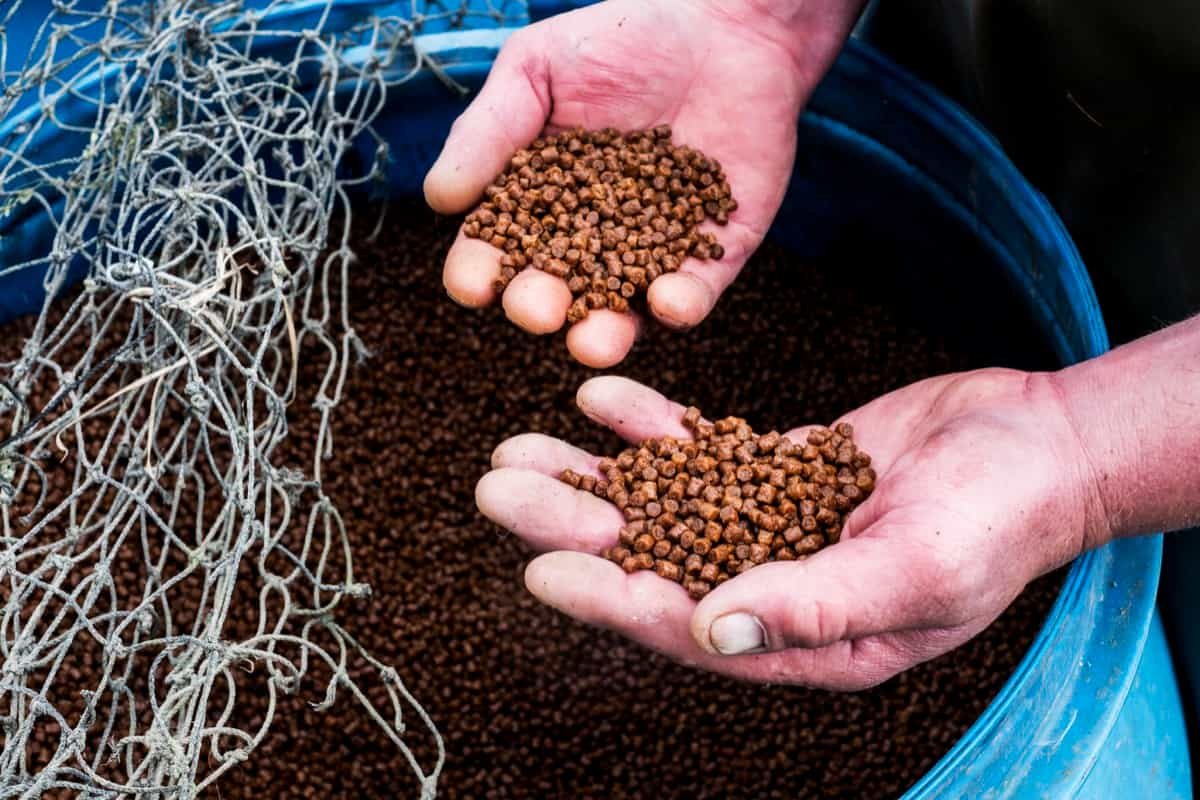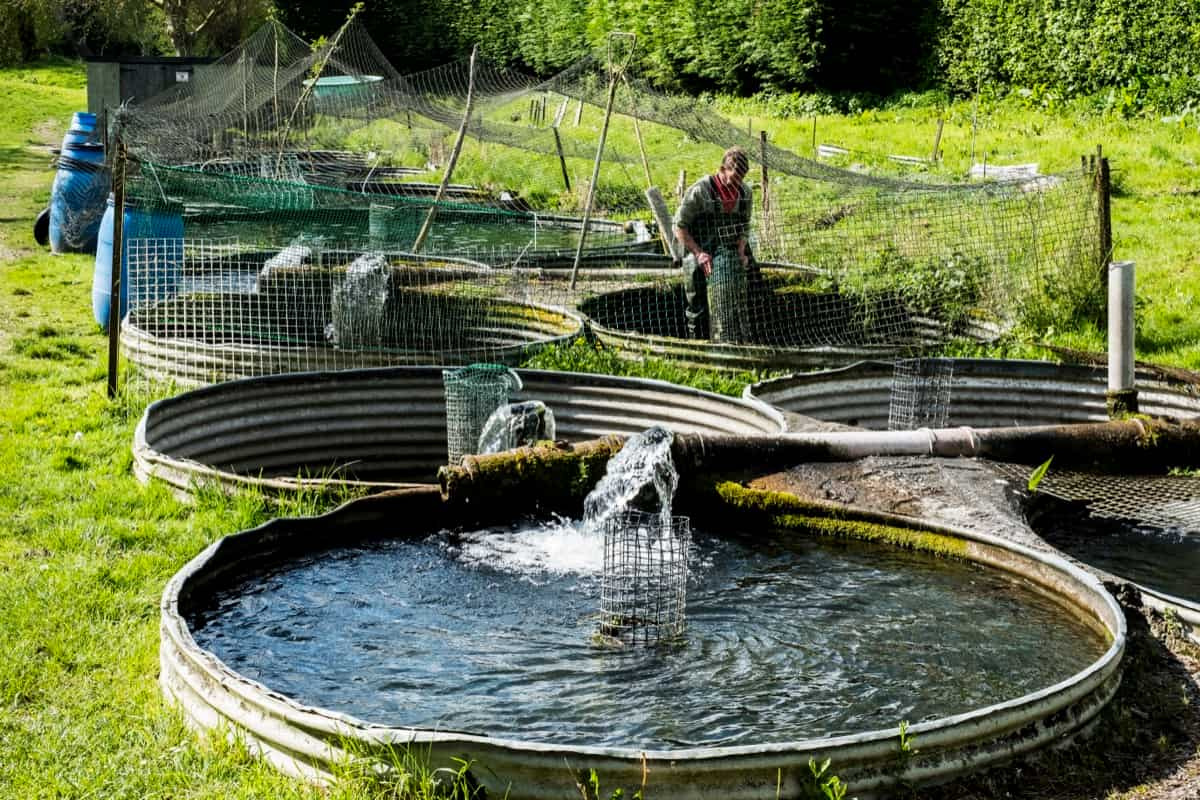Welcome to our blog post on optimizing biofloc fish farming, where we delve into the intricacies of this innovative aquaculture technique. This article will explore the critical aspects of biofloc fish farming, specifically focusing on costs, profits, and economic viability. By examining the nuances of biofloc technology and its impact on the financial aspects of fish farming, we aim to provide valuable insights to both experienced farmers and those considering venturing into this field.

Biofloc Fish Farming Project Report
What is Biofloc Fish Farming?
Biofloc fish farming is an innovative and sustainable aquaculture technique that involves the cultivation of fish in a controlled environment enriched with bioflocs, which are aggregates of microorganisms such as bacteria, algae, and protozoa. These bioflocs form a natural ecosystem within the fish farming system, playing a vital role in water quality management and nutrient recycling.
The bioflocs help convert organic waste into microbial biomass, which serves as a supplementary feed source for the fish, reducing the reliance on external feed inputs. This technique has gained popularity potential to enhance fish growth, improve feed conversion rates, and minimize water exchange.
Biofloc Fish Farming Profitability Analysis
Biofloc fish farming has been recognized as a profitable venture with the potential to yield significant returns on investment. Several studies have indicated the positive economic viability of biofloc fish farming systems. For instance, a research study conducted in India reported that biofloc fish farmers achieved an average profit margin of 25-30% per cycle. Similarly, Bangladesh revealed that biofloc fish farming generated a net profit of approximately $3,000 per hectare per year.
Another study conducted in Indonesia found that biofloc fish farming resulted in a return on investment of 20-30% within the first year of operation. Furthermore, biofloc technology has been shown to reduce production costs by minimizing the dependence on expensive commercial feed, as bioflocs can serve as a cost-effective alternative feed source. These findings suggest that biofloc fish farming holds significant potential for profitability, making it an attractive option for aspiring fish farmers seeking sustainable and economically viable ventures.
Cost-Effective Strategies for Biofloc Fish Farming
Optimal Feed Management: Efficiently managing feed inputs using locally available and cost-effective ingredients can significantly reduce operational costs in biofloc fish farming. For example, replacing a portion of commercial feed with locally sourced alternatives like agricultural byproducts or low-cost feed ingredients can lower expenses.
Water Management: Implementing effective water management practices, such as reducing water exchange rates and maximizing recirculation systems, can minimize water consumption and associated costs.
Biofloc Formation: Ensuring the development of a robust and healthy biofloc system through proper aeration, nutrient management, and microbial injection can reduce the need for external probiotics or additives, thereby reducing expenses.
Pond Liners: Utilizing affordable and durable pond liners can prevent seepage and water loss, leading to significant cost savings in the long run.
Energy Efficiency: Incorporating energy-efficient equipment, such as pumps and aerators, can help minimize electricity consumption and decrease operational expenses.
Disease Prevention: Implementing biosecurity measures and adopting good management practices can prevent diseases, reducing the need for costly treatments and improving overall profitability.
Stocking Density Optimization: Maintaining an optimal stocking density that ensures adequate growth and minimizes resource competition can enhance feed conversion efficiency and reduce feed costs.
Local Market Access: Establishing direct links with local markets and buyers can help eliminate intermediaries and increase profit margins.
Training and Knowledge Sharing: Continuous learning and staying updated on the latest biofloc fish farming techniques can optimize production processes, improve efficiency, and reduce unnecessary expenses.
Record Keeping and Financial Analysis: Maintaining detailed records of expenses, production, and sales and regularly analyzing financial data can identify areas of improvement and enable informed decision-making to enhance cost-effectiveness in biofloc fish farming operations.
Economic Feasibility of Biofloc Technology in Fish Farming
The economic feasibility of biofloc technology in fish farming has been widely recognized due to its potential to enhance profitability and sustainability. By utilizing the natural ecosystem of bioflocs, fish farmers can reduce their dependence on external feed inputs, resulting in cost savings. Additionally, biofloc systems facilitate nutrient recycling and minimize water exchange, reducing operational expenses associated with water usage.
In case you missed it: Key Rules to Successful Fish Pond Management: Water Quality to Feeding

Studies have demonstrated that biofloc fish farming can improve fish growth rates, feed conversion efficiency, and overall production yields, leading to increased revenue. Furthermore, biofloc technology offers environmental benefits by mitigating water pollution risks and reducing the ecological footprint of fish farming operations.
Project Report on Biofloc Fish Farming Economics
This project report aims to analyze the economics of biofloc fish farming, including the costs of production, expected returns, and financial implications. The cost of setting up a biofloc fish farming system can vary depending on factors such as pond construction, equipment installation, and initial stocking of fish. The initial investment can average range from $5,000 to $10,000 per hectare.
Operational costs include feed, labor, water, and electricity, which cost approximately $2,000 to $4,000 per hectare annually. However, biofloc fish farming has the potential to generate significant returns. Studies indicate that farmers can expect net profits of around $3,000 to $15,000 per hectare per year based on management practices. The profitability of biofloc fish farming and its sustainable and efficient practices make it a promising venture for individuals interested in aquaculture.
Assessing the Financial Viability of Biofloc Fish Farming
Assessing the financial viability of biofloc fish farming reveals promising figures. Experts Recommend indicate that biofloc systems can yield net profits ranging from $3,000 to $8,000 per hectare per year, with return on investment (ROI) ranging from 20% to 40%. These numbers highlight the economic potential and attractiveness of biofloc fish farming as a profitable venture.
Maximizing Profits in Biofloc Fish Farming Systems
Maximizing profits in biofloc fish farming systems involves implementing key strategies. Optimizing feed management by incorporating cost-effective alternatives and minimizing wastage can significantly reduce expenses. Secondly, maintaining optimal stocking densities to avoid overcrowding and ensure efficient feed conversion is crucial. Focusing on disease prevention measures and efficient water management can also minimize losses and expenses. Studies have shown that implementing these strategies can lead to 25% to 48% profit margins, making biofloc fish farming.
Cost-Benefit Analysis of Biofloc Fish Farming
The initial investment for a biofloc fish farming system can range from $5,000 to $10,000 per hectare. However, the benefits outweigh the costs. Studies indicate that biofloc systems can significantly reduce feed costs by 30% to 50% due to using bioflocs as a supplementary feed source. Additionally, biofloc fish farming has the potential to generate net profits ranging from $3,000 to $10,000 per hectare per year, resulting in impressive return on investment (ROI) figures ranging from 20% to 40%.
Optimization Techniques for Biofloc Fish Farming Economics
- Feed Formulation: Using cost-effective components and matching nutritional needs can save feed costs and increase feed conversion efficiency.
- Water Quality Management: Proper pH and dissolved oxygen levels promote fish development and reduce disease outbreaks.
- Stocking density optimization eliminates overpopulation, decreases food competition, and enhances fish health.
- Biofloc Development: Nutrient control, aeration, and microbial inoculation increase water quality, feed conversion, and dependency on external inputs.
- Disease Prevention and Management: Biosecurity, health monitoring, and rapid disease management reduce losses, treatment costs, and unhealthy fish populations.
- Record Keeping and Analysis: Accurate financial analysis, cost-saving possibilities, and educated decision-making to maximize biofloc fish farming profitability require thorough production, expense, and sales data.
Financial Modeling for Biofloc Fish Farming Projects
Evaluating the Economic Potential of Biofloc Technology in Aquaculture: Studies have indicated the economic potential of biofloc technology in aquaculture. For example, research conducted in India demonstrated a 50% reduction in feed costs and a net profit of $6,500 per hectare per year. Similarly, a study in Indonesia reported a return on investment of 30% within the first year of operation.
In case you missed it: How to Establish a Biofloc Fish Farm: A Comprehensive Step-By-Step Guide

Financial Modeling for Biofloc Fish Farming Projects: Financial modeling plays a crucial role in assessing the feasibility and profitability of biofloc fish farming projects. Financial models can provide insights into potential returns and risks by incorporating factors such as initial investment, operational costs, projected production, and market prices. For instance, a financial model analysis revealed a payback period of three years and a net present value of $20,000 for a biofloc fish farming project in Bangladesh.
Conclusion
Optimizing biofloc fish farming offers significant potential for sustainable and profitable aquaculture. By carefully managing costs, maximizing profits through effective strategies, and assessing economic viability, biofloc fish farming emerges as a promising venture for both financial success and environmental sustainability.
- Feed Your Flock for Less: Top 10 Tips to Save on Chicken Feed
- Ultimate Guide to Ossabaw Island Hog: Breeding, Raising, Diet, and Care
- Hatching Answers: The Top 10 Reasons Your Chickens Aren’t Laying Eggs
- Eggs and Economics: Breaking Down the Cost of Raising Backyard Chickens
- Defend Your Greens: Proven Methods to Keep Iguanas Out of Your Garden
- Ultimate Guide to Cinnamon Queen Chicken: A Comprehensive Guide for Beginners
- Ultimate Guide to California Tan Chicken: Breeding, Raising, Diet, Egg-Production and Care
- Ultimate Guide to Marsh Daisy Chicken: Breeding, Raising, Diet, and Care
- 10 Types of Chicken Farming Businesses You Can Start for Profits